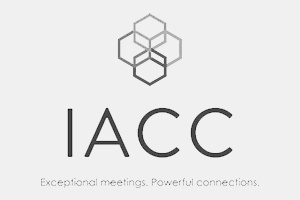Feel more confident delivering presentations and help your audience connect with your content with these must-know tips.
Public speaking is an art where a number of skills have to come together for ultimate success. You may enjoy delivering presentations but want to improve. Or you may feel daunted by the idea of public speaking and want to learn how to overcome this. Regardless of your starting point, these tips will help you deliver brilliant presentations with confidence and charisma.
1. Practice makes perfect
Deliver a powerful presentation by practicing it multiple times before doing it for real. Knowing your content inside-out and feeling totally prepared will ensure your presentation has impact.

2. Avoid memorisation
Your audience can tell if you’re reciting a presentation word-for-word. It will also cause you undue stress if you forget a section or lose your place. Knowing your content in advance will help you ad lib and will ultimately ensure your audience connects better with the material.
3. Cue cards
Going into a presentation with no notes to refer to can feel risky. Prepare some notecards with bullet points or just a few words on them, which can act as prompts if you lose your way. If you know your content well, you may not have to use them, but having this on-hand will act as a welcome security blanket.
4. Project confidence
Even if you don’t tend to feel confident when speaking in public, use body language to make yourself feel self-assured. Smile, speak a little louder to stop your voice from trembling and put a hand on your hip. This will all help to project confidence to your audience, even if it’s not how you feel inside. 
5. Use storytelling
Delivering content in an engaging way can make the difference between a good presentation and an outstanding one. Storytelling is a brilliant engagement tool, so try to find a relevant story or anecdote to make your audience more receptive to the ideas you are sharing.
6. Simple slides
If you’re supporting your presentation with a PowerPoint or other slideshow, remember to keep your slides as simple as possible. It’s not necessary to write in full sentences, so go for short and snappy bullet points instead. Better still, use simple imagery or quotes to illustrate your points.
7. Technology test-run
Ensure you practice your presentation using the technology you’ll use on the day. This includes knowing how to change slides on your PowerPoint presentation and hooking up your laptop to the projector.

8. Don’t rely on technology
Being prepared for all eventualities in your forthcoming presentation means you’re less likely to become rattled if something does go wrong. Technology is one of the most obvious outside factors that could let you down, so have a copy of your presentation on two USB sticks, email it to yourself and have a print-out just in case.
9. Use your surroundings
A powerful way to gain rapport with your audience is to include something about the context you’re all in. Whether there was a delay in delegates getting their coffee in the morning or if it’s been raining all week, start your session by making light of something that connects you all together. It’ll show you’re confident enough to go off-script and that you’re human like your audience too.
10. Remember your goal
The very nature of delivering a presentation is to reach a goal, which could be a crucial take-home message or to gain future business from your audience. Always have your goal in the back of your mind when delivering a presentation to ensure you don’t get off-track. Reinforce your key messages multiple times by repeating them throughout your presentation too.

11. Prepare with the right energy
What you eat and drink just before you deliver a presentation can have a big impact on your mood and energy levels. For example, if you know coffee makes you jittery, avoid drinking any until after you’ve spoken. It’s rarely a good idea to present on an empty stomach either – consuming a small meal or snack that is high in protein before you speak can give you just the right energy boost.
12. Don’t be a comedian
Many people think the easiest way to get their audience’s attention is through humour. Delivering the right joke at the perfect time can achieve great rapport and bring energy to a room, but this is a skill not to be underestimated. Don’t try to be a comedian if this doesn’t come naturally to you, as there are plenty of other ways you can engage your audience.
13. ‘Wow’ factor stats
Instead of reciting lots of facts and figures to your audience, find some facts or statistics that will really make your audience sit up and take notice. Including one or two statistics that will surprise your audience or make them think twice is far more powerful than reeling off lots of information.

14. Short and sweet
Never try to include too much in your presentation and don’t run over your allocated presentation time. Your audience will lose concentration if you do either of these things and your important messages will be lost. If you have a lot of content, work hard to distil it down into the most important points long before you reach the point of delivering the information.
15. Deliver something tangible
Public speaking gives you a captive audience – so see this as an opportunity to build on the momentum you’ve created. Give your presentation lasting value by finishing with a call-to-action, which could be to visit a dedicated website you’ve set up or to sign-up to an e-newsletter to receive more information.
Knowing your subject matter, embracing confidence-boosting tools and being clever with your delivery will set you up to be a brilliant public speaker.






